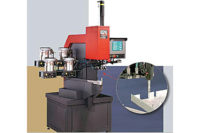MBX Systems has had a clearly defined relationship with its independent software vendor (ISV) customers since the day the company opened for business in 1995. For more than 20 years, MBX has focused on designing and manufacturing custom hardware—so the ISVs can focus on developing and selling their software for mass or niche markets. The setup has benefitted both parties.
MBX builds its hardware products at plants in Libertyville, IL, and Nijmegen, Netherlands. Assemblers at both facilities follow similar manufacturing processes and work instructions.
Throughout much of its history, MBX created these instructions using simple wiki page software. Unfortunately, the software does not allow end-users to fully control or customize instructions or other documents related to training, customer service and product support.
This limitation became a big problem in 2013 when MBX wanted to share some of its documents with third-party, on-site providers, but couldn’t do so securely. According to Justin Formella, CIO at MBX, everything was open to everyone internally, but nothing could be shared outside of the company.
Formella began looking for software that allowed administrators to specify who could and who could not access specific documents. Eventually he selected Dozuki cloud-based software that enables MBX workers in many departments to share files, add commentary, review updates and approve documents electronically.
“It makes decisions for you on how to present documents, and how you can structure your steps,” notes Formella. “Having those limitations forces consistency in the documents and forces users to break up the information and make it smaller with digestible parts.”
The software allows video and photo integration into documents, and it features built-in markup tools to highlight small details like fasteners and connectors. Formella says these tools make it easy for MBX staff to create accurate, easy-to-understand assembly instructions. Equally important, images in created documents can be clicked on to access corresponding documentation.
Introduced in 2011, the Dozuki software has several interactive features. Version control, for example, lets end-users quickly update documents. Once a new version has been released, all users instantly gain access to it, and outdated versions become restricted.
The centralized management feature allows documents to be created, modified and distributed from a single location, then routed for approvals (using electronic signatures) and published to prevent production bottlenecks. Data capture occurs in real time and is possible from one or more documents. Data may be securely accessed by employees on- or off-site. Dozuki backs up this data four times each day and keeps backup copies of documents dating back up to two years.
Mobile apps for iOS and Android devices enable users to publish documents from a smartphone or tablet. In addition, the software’s platform has been fully translated into eight languages (Dutch, English, French, German, Italian, Russian, Spanish, Turkish), and it supports the use of all UTF-8 characters (the dominant character encoding for the World Wide Web).
For more information on cloud-based documentation software, call 866-613-4948 or visit www.dozuki.com.




